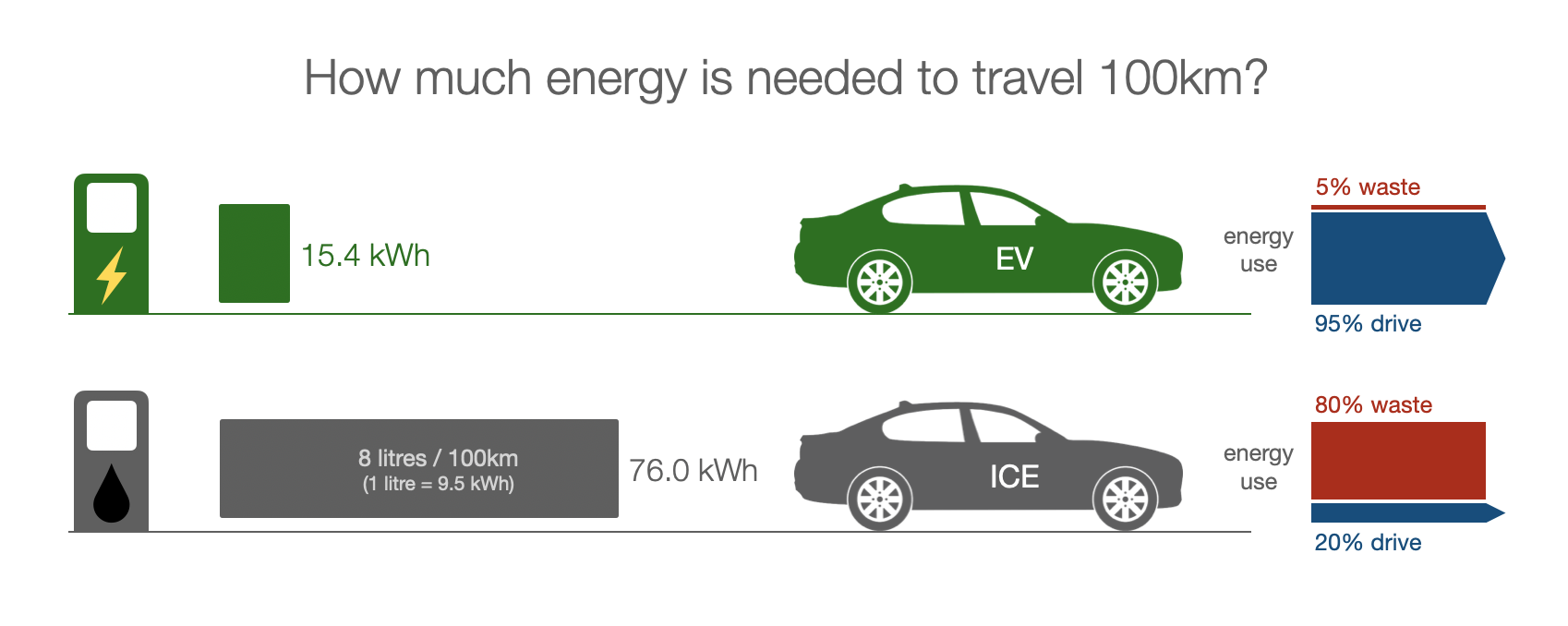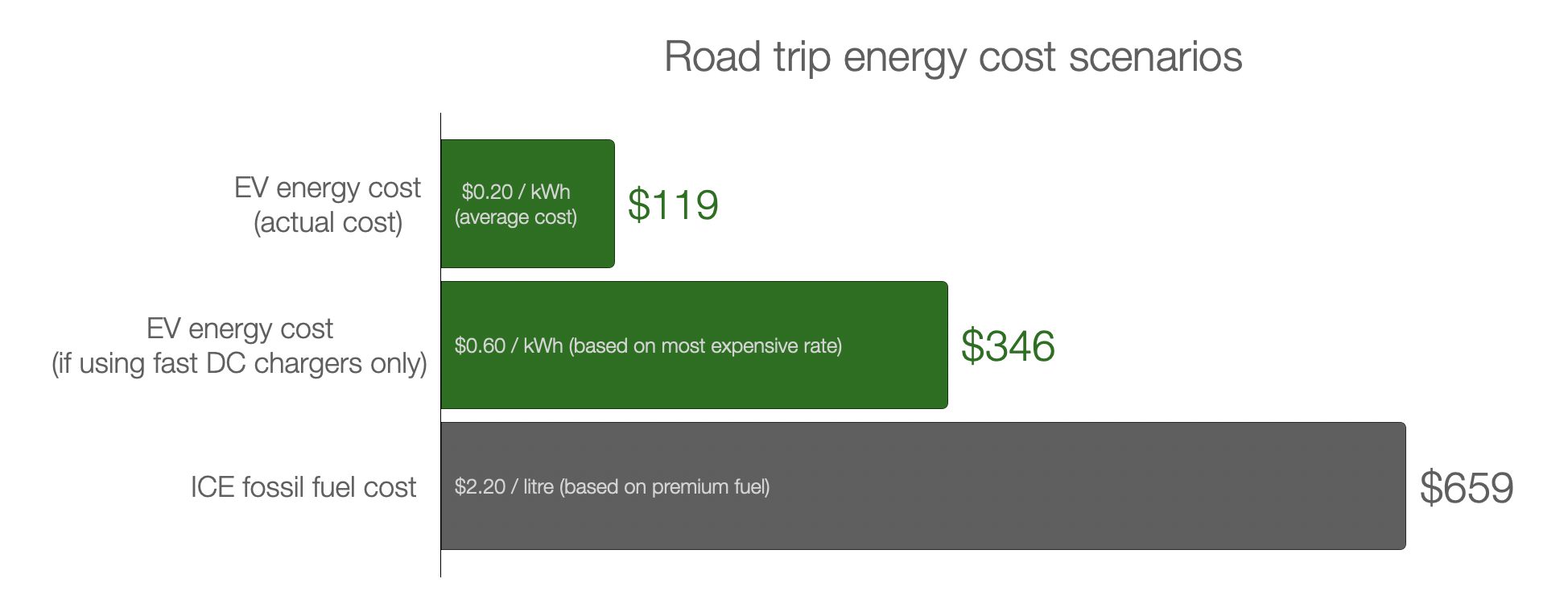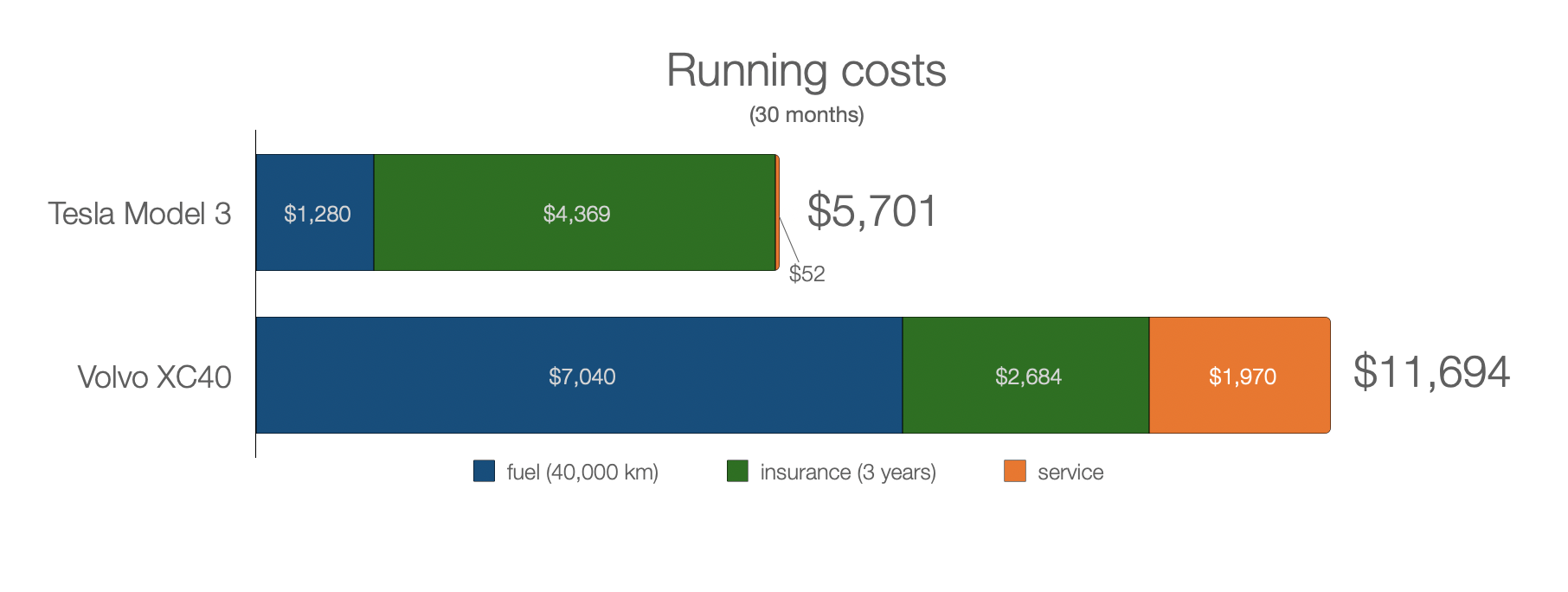We know this will be a silly question very soon, but if you are still sitting on the fence about going electric, let’s talk numbers.
The easiest option, of course, is to do nothing, but what about your current fossil fuel guzzler? When will it become unsellable? Are EVs still too expensive? Should I wait for prices to drop? What about the charging infrastructure at home and on long trips?
In 2021 I wrote about our “4000km EV road trip”, at that time, it was a novelty, at least for us. The aim was to share our experience of owning an EV, as there were new things to consider, like charing, range anxiety, and battery degradation.
Fast forward to now, and we're at it again, a 19-day and 3,748km summer holiday road trip from Sydney to Tasmania. The original plan was to fly, but let's be real, who can afford those exorbitant flight, car rental, and fuel prices these days? Maybe I am cheap or just looking for an excuse to do another road trip.
Back to numbers, nothing fancy, just a few essential data points to help us compare EVs (Electric Vehicles) to ICE (Internal Combustion Engine) cars. Hopefully, this will give you extra insight when considering an EV, as too often, these numbers are ignored or misrepresented.
Energy needs are lower
Before we can make a comparison of electric cars to fossil fuel cars, we need a common way to measure energy consumption.
For ICE, we use (litres/100km), for EVs, we use (kWh/100km).
To keep everything in kWh, 1 litre of petrol = 9.5kWh.

Electric vehicles are very efficient, 95% of the energy is used to move you forward, and only about 5% is lost to heat and friction. Petrol cars, on the other hand, use only 20% of the available energy to drive the wheels, and 80% is wasted as heat and friction in the engine and gearbox.
This does not account for the energy needed for exploring, drilling, refining, and transporting fossil fuels from halfway around the globe to your local service station. It's true that most of the electricity for charging EVs comes from fossil fuel generation. However, today is the worst-case scenario as the balance will swing towards more clean and renewable sources every day into the future. As for our trip, at least in Tasmania, all energy came from renewable sources.
As the saying goes, "The future is already here - it's just not evenly distributed." And for those with solar on the roof, all you need is a 5m cable to access cheap, clean, renewable energy today. No exploration is necessary, just look up. No refinement is required, just electrons. No transportation is needed, just a cable.
The transportation sector makes up 18% of all CO2 emissions. The electrification of this sector will significantly reduce these emissions as almost five times less energy is needed to power electric cars, buses, and trucks.
Energy costs are lower
Let’s use the Tassie road trip to work out the energy cost under real-world conditions in a fully loaded Tesla Model 3.

For comparison, I included three scenarios. The first is the out-of-pocket expense needed to power our car for this trip. The total cost of energy (577kWh) after travelling 3,748km came to $119.
Why is it so low? It’s cheap because not all charging requires payment. For example, the first 450km was free as we started the trip fully charged from our rooftop solar. In addition, many chargers in NSW are still free, and all holiday accommodation has readily available electricity.
The second bar shows the most expensive case for EVs, with no freebies and the need to pay top dollar at Tesla Superchargers. However, despite the relatively high cost of getting your EV charged this way, the outlay is still almost half the cost of driving a petrol car, illustrated in the bottom bar.
Burning fossil fuels to get around is a terrible idea for us and the planet. But what makes even less sense is paying excessive prices to only get 20% of the usable energy out of each fuel tank.
I think the numbers speak for themselves.
Running costs are lower
What about annual costs like insurance and servicing?

And no, the service cost for the Tesla is not a typo. $52 is the total servicing cost over 30 months. Cabin air filter replacement.
Surprised? Not really.
Electric motors have one moving part, a single gear gearbox, and brakes are rarely used with one-pedal driving. Engines have several hundred moving parts, all needing regular maintenance. The difference is clear, and the advantage can only improve over time as clean energy costs drop and competition in charging infrastructure puts more pressure on prices. I also foresee adjustments to the currently unreasonable insurance premiums for electric cars.
Upfront cost
Finally, we should address the elephant in the room, the sticker price. This time, even I was surprised to find very little difference based on the current (Jan 2023) prices. For example, the Tesla Model 3 RWD comes in at $66,575, and the petrol Volvo XC40 is slightly cheaper at $63,460.
The difference is shrinking every day, and when you consider the running costs we covered in this post, EVs begin to make financial sense. This story gets even better the longer you keep your car. Yet, for the electrification transition to make a real impact, we need price parity at the $30,000 price range.
All indicators are pointing in the right direction as Electric vehicle uptake in Australia reached a new high, with 33,410 EVs being sold in 2022.
The will continue in 2023 as many new models become available here, and the floodgates will really open once Australia introduces the Vehicle Emission Standards.
Time to go and get that Volvo cleaned up for sale. The writing is on the wall, as Volvo is to sell electric-only cars in Australia by 2026.
.